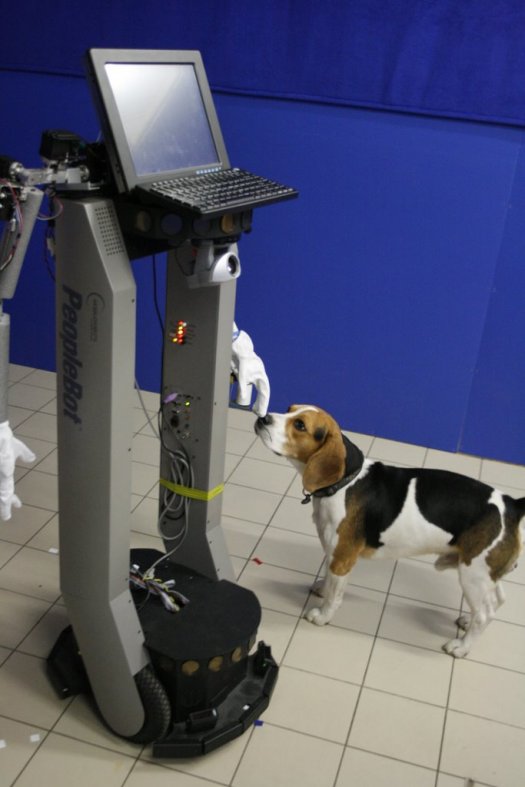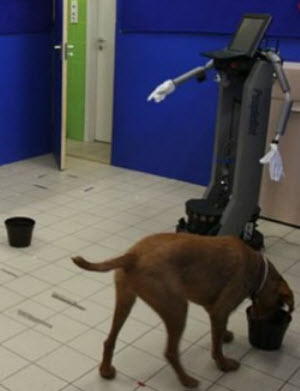Dogs dig sociable robots
Will robot-dog games replace cat videos?
September 16, 2013

PeopleBot and pup (credit: Eniko Kubinyi)
The researchers used a customized human-sized PeopleBot with two arms and Mickey Mouse cartoon-style four-fingered hands. One of its robotic arms makes simple gestures and grasps objects.
It was programmed to either perform socially enriched human-like conduct (such as calling a dog by its name) or to behave rather machine-like and in an asocial manner.
The human experimenter could only do moves similar to the device’s capabilities, and was therefore only allowed to use one hand to make specific gestures.
This particular robot wasn’t social enough to elicit the same set of social behavioral reactions from the dogs that they normally display in their close relationship with humans.
But the researchers recorded definite positive social interactions between the animals and the robot. For instance, the dogs spent more time near the robot or gazing at its head when the PeopleBot behaved socially.
“Roboticists who design interactive robots should look into the sociality and behavior of their designs, even if they do not embody human-like characteristics,” Lakatos advises.
Experimental design and findings

(Credit: Eniko Kubinyi)
One set of dogs in the asocial group first observed an interaction between two humans (the owner and the human experimenter) and then observed an asocial interaction between the owner and the robot. The remaining dogs in this group participated in these interactions in the reverse order.
Then, in the social group, one set of dogs watched an interaction between the owner and the human experimenter followed by observing a social interaction between the owner and the robot.
The remaining dogs in this group also participated in these interactions in the reverse order. These interactions were followed by sessions in which either the human experimenter or the robot pointed out the location of hidden food in both the asocial and the social groups.
The PeopleBot mobile platform was designed at the Institute of Computer Engineering, Control and Robotics at Wroclaw University of Technology in Poland.
(¯`*• Global Source and/or more resources at http://goo.gl/zvSV7 │ www.Future-Observatory.blogspot.com and on LinkeIn Group's "Becoming Aware of the Futures" at http://goo.gl/8qKBbK │ @SciCzar │ Point of Contact: www.linkedin.com/in/AndresAgostini
 Washington
Washington